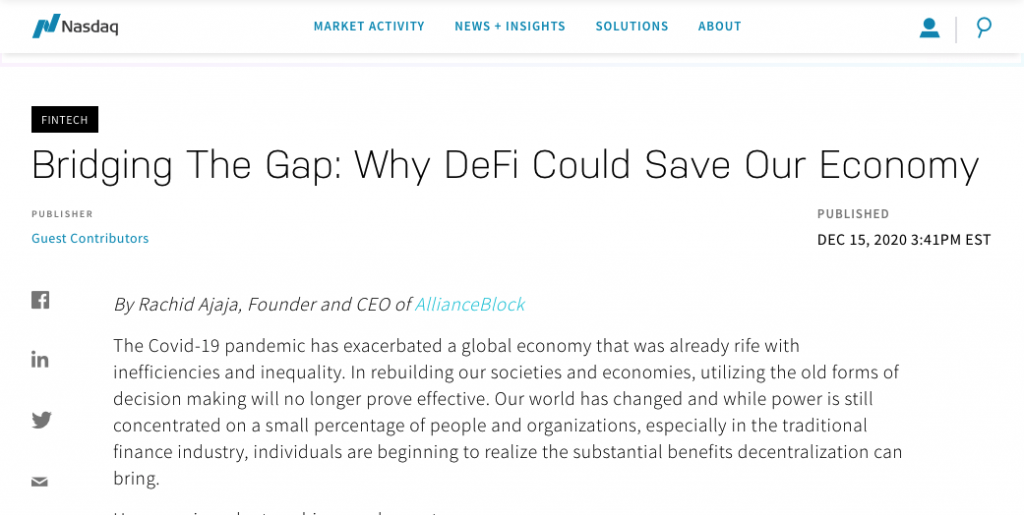Month: December 2020
4NTS December Newsletter
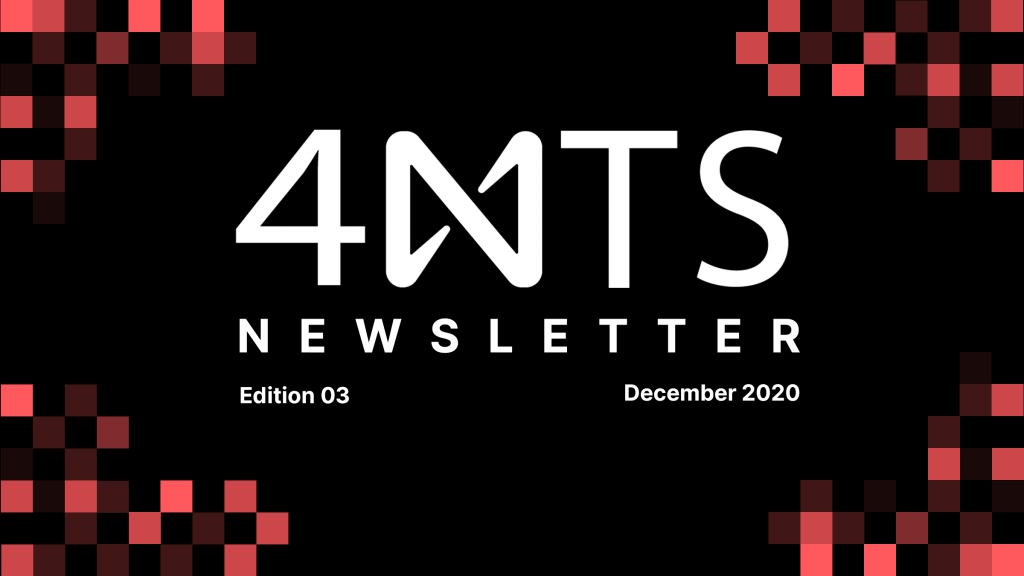
Welcome to the 4NTS December Newsletter! December has been a month to remember in the crypto space, and also for the NEAR Ecosystem. In light of plenty of new content and new team members to the core NEAR Team, there have also been some important product updates relating to projects developing on NEAR at record speed. Let’s get started!
NEAR – Calm Before the Storm?

December was definitely less volatile of a month compared to October or November. This does not mean that things are not happening—there is a lot going on in the background. New batch of Open Web Collective application? Check. New projects being signed on to the ecosystem? Check. New hires? Check. Interesting price action on $NEAR that might tell us that something really intriguing is going on? Check. 2021 is going to be very exciting for NEAR. Are you ready?
NEAR Without the Noise Recap: What Comes Next?
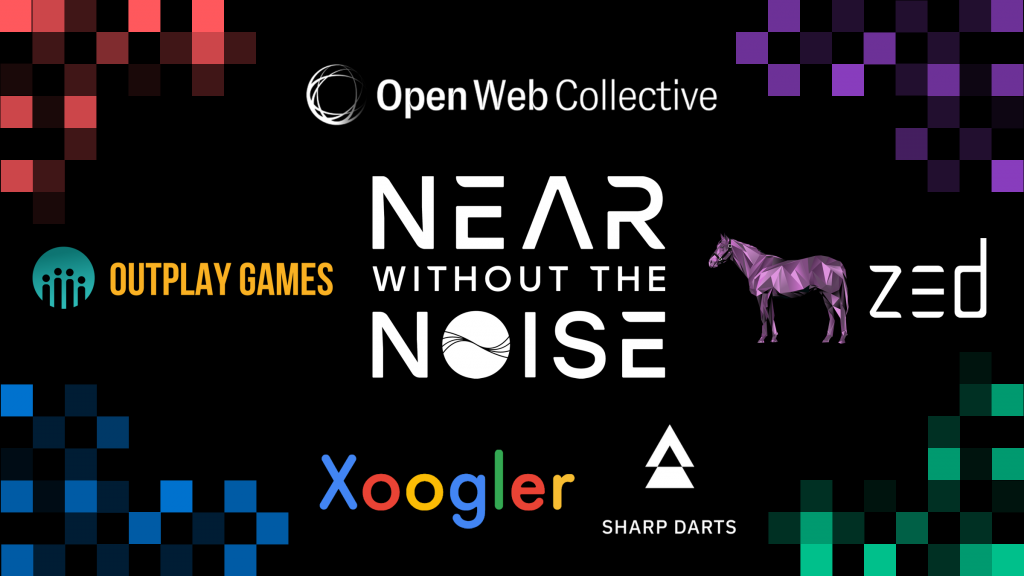
December featured three episodes of NEAR Without the Noise from stellar people within the NEAR Ecosystem. In early December, Mildred and Chase from the Open Web Collective and OP Games respectively came on and shared their insight and experience from working with an up and coming Crypto Accelerator. 2 weeks later, Travis and Rob from Zed.run joined 4NTS Guild to discuss their innovative digital horse racing ecosystem, as well as the future of NFT’s. In late December, Rune Bentien – head of GooGuild and SharpDarts joined 4NTS Guild to talk about the state of crypto, the startup world, and the migration from Web2 to Web3. The full videos of Zed.Run and GooGuild can be found on Youtube.
What’s Next? In January NEAR Without the Noise will continue to expand into the NFT’s angle of the NEAR Ecosystem, as well as featuring some completely new perspectives on the investment opportunity behind the NEAR Ecosystem, as well as the growth of NEAR in China!
Guild Update – Education Guild Launches, Createbase Grants go Live, and Guilds Pioneer December Townhall!
Guilds are quickly becoming a fundamental component of the NEAR Ecosystem. In the month of December the Education Guild launched on NEAR for anyone interested in learning more about NEAR, Crypto, and Ecosystem Design! In parallel, Createbase launched its Grant Program for prospective artists and NFT enthusiasts alike interested in building a home for NFTs on NEAR. Finally, the NEAR Townhall for the month of December featured an exclusive Guild update on the status of Guilds around the NEAR Ecosystem. For a full overview of this update check out the video here.
Bonus: Students are prime candidates for recruitment into the Web3 space – Not only are most of them tech savvy and comfortable with the idea of decentralized products, but they also have time to learn crypto while they complete their studies! Check out a student’s perspective on the Crypto space through a member of 4NTS Guild.
Electric Capital Report on NEAR: The Numbers Speak For Itself
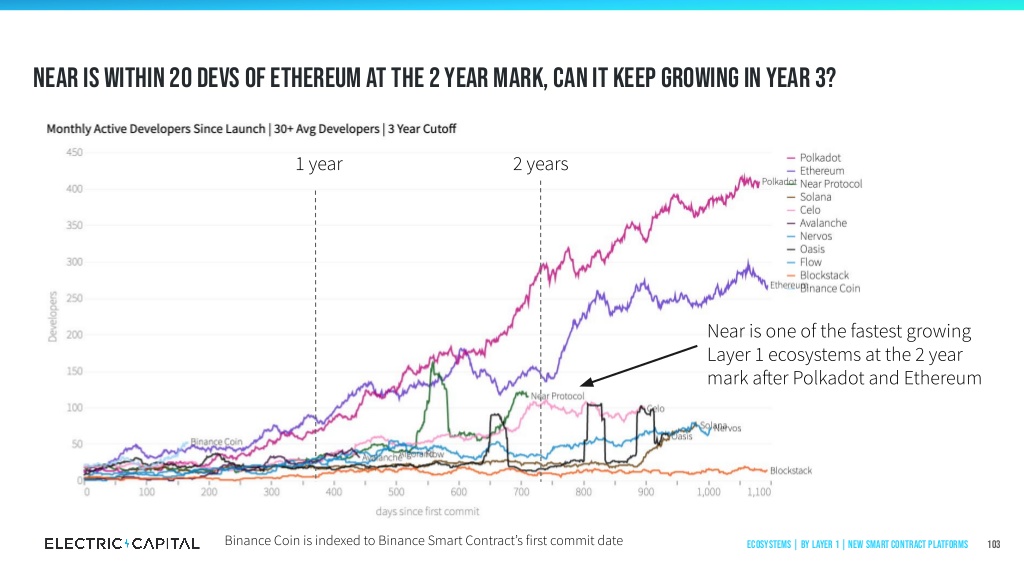
Electric Capital is an early stage crypto investment firm that recently released a report on the state of the crypto space and the different levels of development across different Ecosystems. The Research Update known as “Electric Capital Developer Report 2020” had a number of important insights into the state of NEAR protocol and its development in light of other L1 Ecosystems. The most notable ones?
NEAR is one of the fastest growing Layer 1 Ecosystems at the Two Year Mark After Polkadot and Ethereum
NEAR has 3 times the number of developers in Q3 of 2020, that they had at Q3 in 2019.
NEAR is within 20 Devs of Ethereum at the 2 Year Mark.
NEAR has increased their developer monthly average by 100%.
Paras Is Building on NEAR:
Paras is one of the newer projects that are currently building on NEAR. Paras is aiming to become a leading marketplace of digital cards, a cool concept that ties in with the surge of NFT-related startups.
Even though the idea is pretty niche, you can’t deny that it’s pretty damn cool. And besides that, digital ownership of art is becoming a trend nowadays. To learn more about NFT’s on NEAR check out A Home for NFT’s is Building on NEAR.
NEAR Protocol Hiring Surge – Names that Matter:

Last but not least, the month of December witnessed a hiring surge of NEAR team members: From a VP of Marketing Alexandra Tinsman, to new Community Team Leads, NEAR is clearly staffing up for a big 2021.
What We Are Reading and Watching:
Leadership in The Ownership Economy—Scaling Decision Making while Minimizing Securities Risk by Jesse Walden
Crypto Theses for 2021 by Messari
The Age of Surveillance Capitalism by Shoshana Zuboff.
Psychopolitics, Neoliberalism, and New Technologies of Power by Byung-Chul Han
Giancaspro, M. (2017). Is a ‘smart contract’ really a smart idea? Insights from a legal perspective. The Computer Law and Security Report, 33(6), 825-835.
Pentland, A., & Hardjono, T. (2019, November 23). Empowering Artists, Songwriters & Musicians in a Data Cooperative through Blockchains and Smart Contracts. ArXiv. arXiv.
Questions We’re Asking:
With Uniswap gaining in popularity and fees skyrocketing again, will NEAR be the perfect solution? How does 1inch fit into the picture?
What will the BTC bull run mean for us in the future?
Is DeFi actually the future of finance or a mere fad?
Is the digital art NFT surge a bubble or the start of a long term trend?
How long will it take retail investors to discover layer 1 alt coins?
What is the future of Ripple?
NEAR Without The Noise Episode 6: Rune Bentien
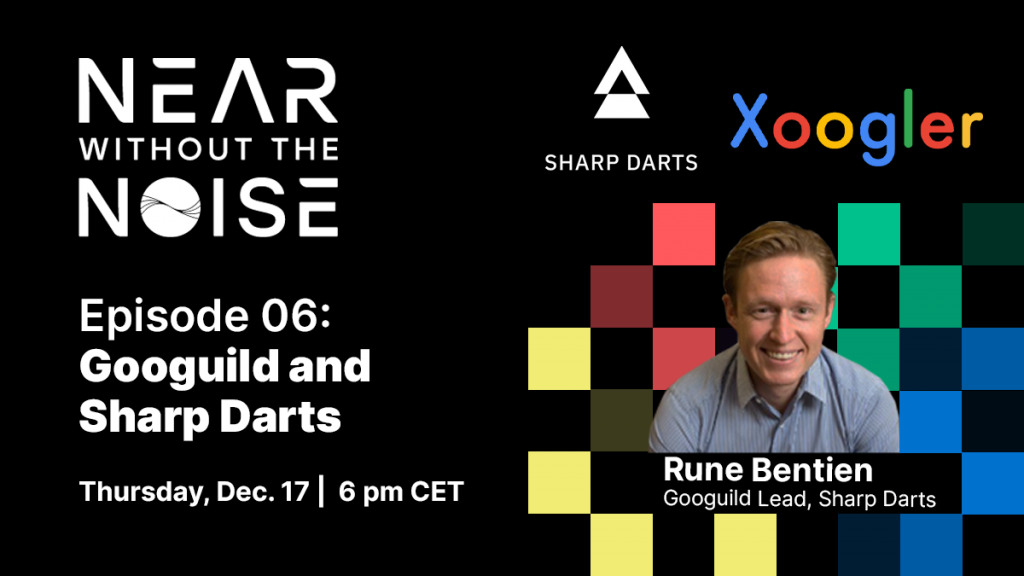
NEAR without the Noise Episode 6 Featured Rune Bentien from GooGuild and Sharpdarts. The discussion was one of the most insightful and important to describe the current state of crypto and the opportunities provided therein for developers and entrepreneurs just getting started. For a full overview of the episode, check out the YouTube repost here.
In this summary, the most important points relating to Rune’s talk are broken down and explained: How Rune sees the nascent crypto industry, advice he gives to Web2 developers, his insights on launching a crypto company, and how he sees the fast-growing NEAR Ecosystem!
Who is Rune Bentien?
Rune is an experienced entrepreneur, investor, and technologist who has worked across companies such as Google and ConsenSys. An economist by training he spent 9 years working in commercial roles at Google, before moving into crypto investing through ConsenSys Ventures. As an early supporter of the NEAR Ecosystem, Rune is founder of both GooGuild – a Guild on NEAR for Google Employees as well as Sharpdarts – a validator incubator that pioneers a business model of the future.
In this episode of NEAR Without the Noise, Rune spoke about a wide range of topics: From the basics of crypto, to the migration from Web2 to Web3, to the future of the NEAR Ecosystem to the importance of entrepreneurship. As an insightful thinker and experienced crypto entrepreneur, Rune provides a unique perspective into the current state of the space.
What is the Value Proposition of Blockchain?
At the beginning of the conversation, Rune provided a multi-layered answer to what the value proposition behind blockchain really is from his own perspective, a more general crypto perspective, and then from the perspective of how some of his Googler friends see it:
New Ways to Fund and Invest in Entrepreneurial Projects: “With the ICO craziness there was something here about enabling founders and startups with resources quicker and in a simpler way than previously possible. We know that the ICO model as we knew it was dead, but for me that was extremely powerful and the thought of being able to actually have liquid investments in early stage projects is this small aha moment.”
Crypto has Become Accepted Across the Mainstream: “The conversation has changed on Bitcoin and Crypto: It is no longer about this being illegal or a fraud, now it is a question about how it is compliant. We talk a lot about DeFi and what is next, but I am here for the long haul and same thing with NEAR. To enable real projects on top of NEAR to help the overall value of the community appreciate.”
Google Is Paying Attention: “In Google there was a lot of interest in blockchain. The point is there is a lot of interest and there still is. Now you still have a lot of people [who aren’t familiar with the technology], but they are probably pretty comfortable given the outside situation. There are many people following this from these big tech firms.”
And perhaps the most important point of all three is that crypto provides a new way of fractionalizing and distributing value across different verticals. This value is something many stakeholders in the future will be interested in participating within. For Rune the first step in getting started in Crypto, is to recognize that the value is real value:
Probably 99% of the people don’t really care if it is running on AWS or Google Cloud. Or Blockchain or a centralized technology. Some of those can be ownership of data control, etc. The first step of all in general is to get hold of some crypto – try to understand what this actually is and that this is actually real money. We all know this is all about trust.”
NEAR and GooGuild:
Rune followed NEAR from its early days, through Illia – an ex-Googler and the Co-Founder of NEAR. With the launch of NEAR and the Open Web Collective, Rune was involved from the very beginning with NEAR’s stellar team – many of which have previously worked at Google and other big tech companies. On the topic of NEAR, Rune emphasized the speed with which the protocol has developed and how important that is for the Ecosystem as a whole:
“I mean they moved incredibly fast. And that is one of the core traits for any company. Speed is bloody key. Right? And I think they have done that extremely well.” – Rune Bentien
GooGuild was created by Rune, to try to help facilitate business development on top of the protocol: GooGuild is on NEAR to help people who either want to build, or people who want to help people build. As Rune explains, “And some of that can be for profit projects, some of that can be more ecosystem plays – and just trying to play a small but hopefully long term and valuable partner in the NEAR ecosystem.”
To date, GooGuild is working to integrate other crypto projects with NEAR protocol, or to support projects already building on NEAR. This includes most notably, Flux as well as Enzyme.
Sharp Darts
One of the first projects supported by GooGuild is known as Sharp Darts. Sharp Darts is a validator on NEAR that uses the fees from validation to incubate new projects building in the Ecosystem. As Rune explains in more detail:
“If you are trying to create a small ecosystem or network where we see the proof of stake network as a cornerstone – why don’t you make sure that that network keeps appreciating in value, why don’t you try to consider passing on the rewards to projects actually built with NEAR. That is what we are trying to do. If you stake with sharpdarts, the fees that we take would cover basic stuff and then everything else you go to projects. We are not there yet but we are working on it.”
In many ways Sharp Darts is pioneering a business model of the future: Where a validator of an open-source protocol recycles the profits from being a validator into supporting the development of new projects on top of that protocol. As the NEAR Ecosystem continues to grow, it is clear that the value accrued to validators will increase – providing Sharp Darts with a prime opportunity to invest in the long-term potential of the ecosystem.
On Entering the Crypto Space as an Entrepreneur:
While Rune brings a world of experience to investing, product market fit, and startups in general, he also is an experienced entrepreneur in his own right, he has an incomparable attitude and spirit to the nature of solving problems and creating new products for the world to use.
For his story personally, he recollected his own journey as an entrepreneur and how he saw the importance of going out to solve problems instead of staying in a comfortable job at Google. The story is set when a friend of his explains what is really impressive about working at Google:
“Rune, you know what, I think it might be hard to get through the doors into somewhere like Google or Deep Mind. The Impressive part is when you decide to leave the most comfortable environment to actually pursue solving a hard problem, whether that is for money or something else.”
Rune goes on to explain how the key to proper entrepreneurship is rapid execution paired with iteration and improvement. In this context, any founder or developer looking to build a project that improves the world and provides value to a new market should be supported and helped within the Ecosystem.
Where Does NEAR Go From Here?
As an early Guild in the NEAR Ecosystem, Rune spoke often about NEAR looking for product market fit in the emerging crypto market space. But more important to that, he spoke about the need for NEAR to focus on developing the stack of success stories within their ecosystem:
I really only believe that the only way to create proper appreciation of value, is by building on the technology stack. The technology stack will evolve in maturity as people use it. I think where we are now, where there are several other Layer 1s, the key is more critical mass. I see these protocols as a market place as well. It is not only a function of good technology, but it is mind share, and user and dev adoption. I think that is where everybody is trying to – ConsenSys did an amazing job with Ethereum – to build out that whole engine to get mindshare with ethereum. But also how can you also expand that mindshare – to me the most critical part is to ensure Dev and User adoption to ensure they are successful.
In addition to the need to keep projects building on NEAR, Rune emphasized the importance of staying on the cutting edge of crypto-innovation as a collaborator with other protocols:
You can bridge to ETH to some extent – you can try to copy cat everything that has been done with other existing protocols. Do you believe that there is more to this than DeFi and if so, what is after DeFi? The question for NEAR as a community, and as a team is about what they want to support and become. What I really like is that they are trying to enable this open community cloud platform for decentralized applications. I think there is not necessarily an easy answer. Do the obvious ones really help?
For a full overview of the episode, check out NEAR Without the Noise Episode 6: With Rune Bentien. For any prospective founder or team of entrepreneurs entering the space, the NEAR Ecosystem contains a number of opportunities to quickly and easily get started with building the future internet of value and the many new products contained therein.
Getting Into the Crypto Space: A Student Perspective
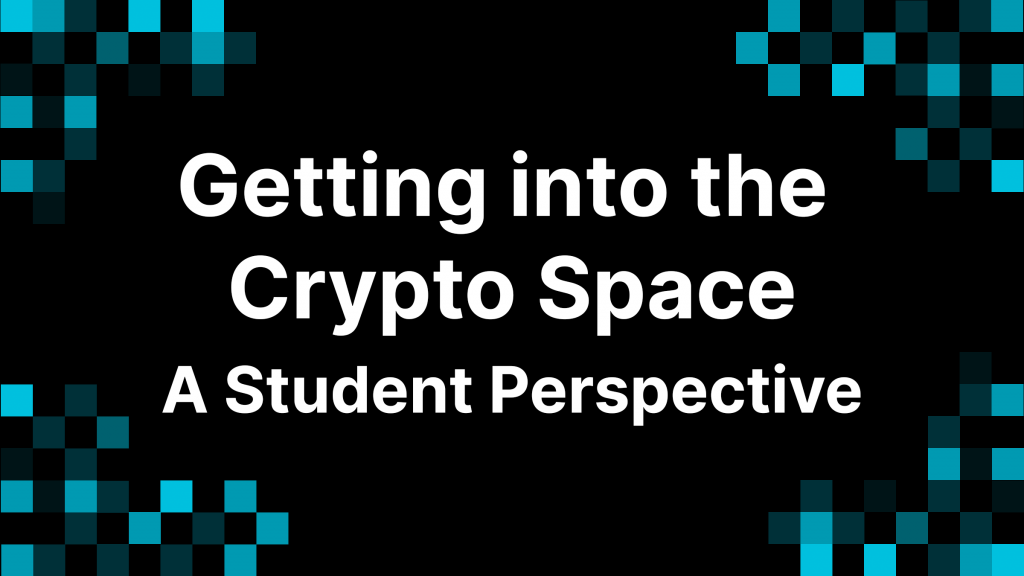
How many people don’t want more control of their own money? How many people can be dependent upon themselves to own their own funds and finances? Well, enter decentralization.
Two weeks ago I was an absolute newbie to the crypto world to the extent that the only thing I was aware of was that Bitcoin existed. I knew nothing more than that. Nothing about decentralized finance, blockchain, or any of the tools embedded within those focuses. Fast forward, and entering crypto has been the best thing I’ve done for my own interest and development as a student starting a career in this space. It will give me a great opportunity to grow my knowledge in cutting edge technology as it begins to grow.
Background to Get into Crypto: What I Have Seen So Far
Guess what? In this world, nobody has a background. The “résumé” to join a Guild or participate in an open-source Ecosystem like NEAR (and the rest of the crypto universe for that matter) answers the questions:
1. Do you have some sort of skill, at all?
2. Are you willing to learn a vast number of other skills (the most important being how to teach yourself)?
3. If you’ve been in this space before, how long?
4. Are you willing to keep trying, engaging and working with others to advance the goals of the community?
Nothing else matters—not age, years of experience, whether you went to the best school, or any school at all, or how many groundbreaking applications you’ve built. You don’t have to retake college entrance exams to get a job in this cyberspace, and you surely don’t have to have every possible answer floating around. That is an exciting breath of fresh air for students and software engineers like myself, who are interested in participating in projects that we find meaningful and collaborative and that will someday have a lasting impact for the larger world.
The Basics of the Crypto World: Getting Started
The first thing I learned with respect to this cyberspace is that nothing is set in stone. Things change everyday, and the use cases to all of these tools are absolutely endless. For example, let’s imagine a world where there exists multiple currencies that are not bound by a location. These currencies belong to the world. Sure some currencies may be best for certain situations, but anything would work. With respect to that, the BTC, ETH, XRP, LTC, etc. belong only to the individual when they keep it in their own wallet.
The currency is never owned by a bank or any other third party—the currency takes its turn with each individual and never anybody else. With that, each person must understand that his/her money exists on the blockchain. Any action is final. Send to the wrong address, and the currency is gone. In parallel to the sense of personal ownership, the entire space is truly committed to being open sourced. So not only is value distributed independently, but data is also used openly.
Decentralization
Understanding the idea of decentralization is key to grasping the underlying value proposition of blockchain technology. This is what NEAR is working towards for their ecosystem, but with the added value of having easy to use applications and a generally scalable protocol. From what I can see to date, decentralization is all about opening up access, ownership, and power: decentralizing apps for things like finance allow for more autonomy by individuals while also removing barriers to entry. There is no central person, company, or companies to control the finances or, in the case of NEAR, the open web. From this, we could see serious advances in fields like gaming where efficiency, digitally scarce items, and cryptocurrency integrations are top priorities that may one day be seamless and standard for all games.
What Lies Ahead
Given that this new currency has no “homeland,” think about global betting markets (on Flux?) or maybe a new stock market. What about fully decentralized finance (DeFi)?Put a couple of these together and you have a fully operational stock market on a DeFi system. What about all the other applications of these things? The possibilities truly are endless. Many of these ideas only look at the intersection of finance and crypto. What if we look at something like a decentralized and open web? Here at NEAR, we are using this to solve the problems that arise when people start to scale applications that relate to data, privacy, gaming, digital assets, marketplaces of the future, and much, much more.
Using NEAR protocol, these opportunities are made possible using advanced technologies like sharding for parallel computation in unison with a user-friendly account model. Pretty cool if you ask a Gen Z’er like me looking at what the next 20 years of my life and career might look like.
Advice To Fellow Students and Developers:
Get into this world….yesterday. As companies begin to understand the advantages to blockchain, DeFi, and NFTs, they will migrate quickly. At that point, blockchain and crypto will blow up. The thing to understand is that this newfound technological journey will not be a lonely road. As I’ve experienced at NEAR and through other contacts, people are more than willing to help you through this space and answer all the questions you may have. I, for example, have accepted this world in stride and feel like I am beginning to find a grasp on the surface of crypto and the general cyberspace in only 2 weeks. The learning curve is high, but the space is never boring. Learn everything you can…the rabbit hole is very deep and growing faster than ever.
What Do Developers Have To Say About NEAR? Figment / NEAR Update
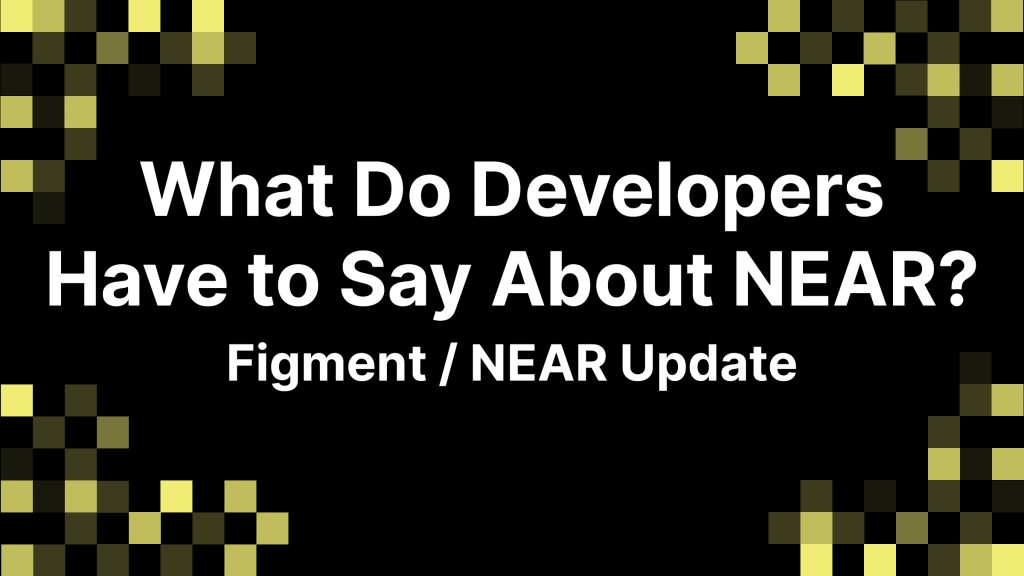
Last month the NEAR team announced a partnership with Figment Pathway, a hub for developers to get started on the basics of different protocols including NEAR. In a recent event featuring NEAR Head of Education Sherif Abushadi, the Figment team provided an update as to the development of the NEAR Learning Pathway, alongside a number of developers taking part. Here are the most important takeaways from that update:
Developers Are Signing Onto NEAR At Record Numbers:
A lot of Devs are joining NEAR, starting to build on NEAR, learning how to interact with the Stack SDK, completing tutorials and learning how to deploy their first smart contract. Those users come from over 60 different countries and have created over 563 accounts on NEAR data hub.
Notably, these developers are also eligible to earn rewards in NEAR with over 14,000 NEAR already rewarded.
What Have The Developers Said?
Over the course of the update, a number of developers from around the world spoke on the nature of the program as well as their perspectives on NEAR. Here are their most important insights:
The one thing on NEAR that Ethereum Developers will especially like is that 30% of fees go to the owner of the contract.
On the topic of NEAR and Ethereum, the Devs – many of which have been building on Ethereum or Bitcoin for more than 3 years – were clear that there was really no comparison between NEAR and ETH as separate blockchain Ecosystems:
There is no ecosystem comparison between NEAR and Ethereum – They are both different Ecosystems that can collaboratively evolve in the future: Ethereum has already 4 or 5 more years of developing the tooling, NEAR has had about a year and a half. There is not really an ecosystem comparison. NEAR has taken many lessons from Ethereum and tried to improve upon it.
It’s easy to build on NEAR With Rust:
“The good thing about NEAR is that if you want to experiment and play around on Test Net you can do that super easily. You can do it easily on Rust. You don’t have to learn a different language or a special book on programming.”
And some developers think, you should only be building on Rust:
If you are serious don’t bother with AssemblyScript, if you are serious use Rust
Many developers see themselves on the cutting edge of a new era in the NEAR Ecosystem:
We are the pioneers. This is the dawn of a new era. The opportunities are boundless. This will have, in my opinion, the greatest impact in revolutionizing technology bigger than the internet, bigger than oil – people don’t realize what this will do. Life will be tremendously different, and we are just in the early stages. We don’t have – there is no Google, Amazon, ExxonMobile, the Microsoft, the Apple – these giants still need to be created. There is a tremendous opportunity for everyone here.
OysterPack on Figment – NEAR Learn Session
Yield, DeFi and BTC Hoarders: How NEAR Fits in this Entropy
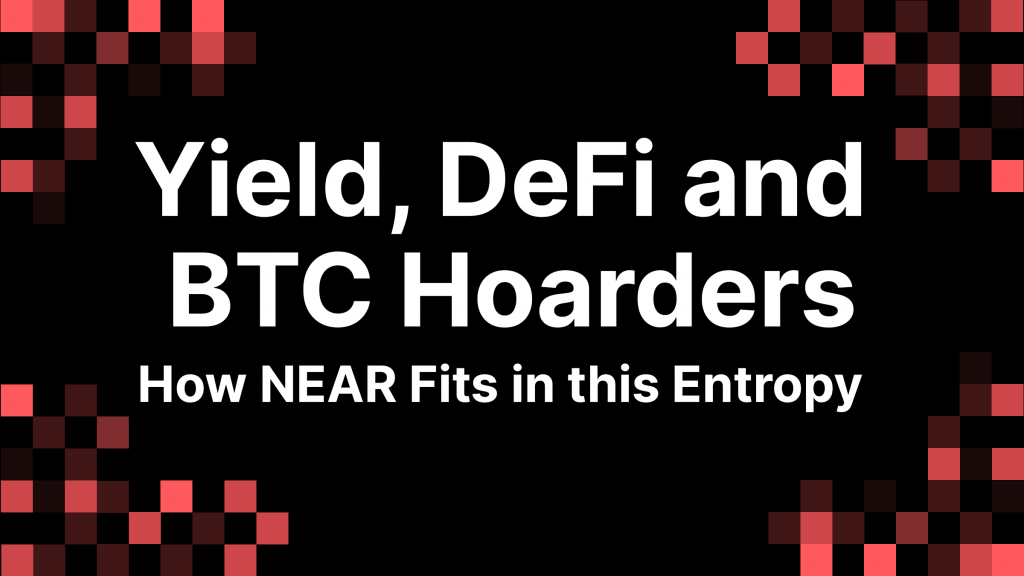
This article is fueled by excessive amounts of happy chemicals released in the brain, which is a normal human reaction that occurs after surviving 3 years of a severe bear market and seeing BTC breach an ATH. Be warned.
We’re in the middle of the financial revolution and you are the one holding the banner. No, really. If you are participating in the current state of the ecosystem, you are officially one of the early adopters that put their energy and money into this absurd and bizarre quasi-financial industry which is shaping out to be something that might save the traditional financial system. Don’t believe me? Fine, but even NASDAQ is writing about it.
Currently, the yields in the traditional economy are disappointing. 10-year Germany sovereign bonds are at -0.567%, and this is not , as there are more European countries that have a negative yield. So you are paying money to hold their bond. This is partly driven by the Covid depression, but quantitative easing (money printing, which is a common meme nowadays) is also at fault. However, if you invest enough money in ETH and set up a node, you can get 5%-20% APY (the number at the time of writing this article is still subject to change). NEAR makes you around 14% annually. Way better than paying money for holding sovereign bonds, right?
Of course, this is not an intellectually honest comparison because risks involved in holding sovereign bonds and staking some weird blockchain tokens are different, and therefore you are being paid a premium for taking on these risks. Fair enough. However, the space matures, good projects emerge out of the entropy and tech gets refined. And as tech gets refined and the risks diminish, new opportunities appear. For example, Circle is offering a waitlist for their new feature – a dollar deposit account that offers you 10.75% fixed term annually. And this happens in an economic environment where you essentially have to pay for holding some sovereign bonds. Circle can do this through different DeFi strategies that probably yield them around 15% annually, of which they give 10.75% to the depositors and leave rest as profits and as treasury in case of a crisis.
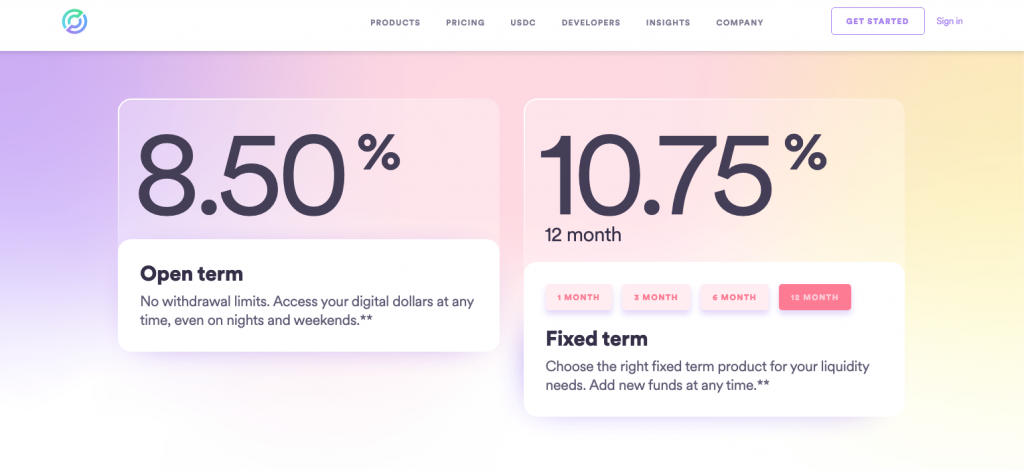
Even though this is still proof of concept and not a full-fledged feature, it allows us to take a look at the possibilities that the future might offer usAnd the most exciting thing is not even the fact that in a few years you might be able to add a few zeroes to your total portfolio – it’s that now there is an alternative to the financial system. Now you have another way of getting yield rather than banks or traditional investment – obviously, if you are bold enough and are comfortable with tech.
The paradigm is changing rapidly – more and more funds are purchasing Bitcoin and coming out about their investment (fill before shill, remember). The last addition at the moment of writing this article was One River Asset Management that claimed that they invested 600 million dollars in Bitcoin in November. And that they are planning up their stake to 1 billion dollars of Bitcoin and Ether in 2021. So what does this tell us? Institutional investors acknowledge the opportunity that Bitcoin constitutes, especially under these global economic conditions. However, they also acknowledge Ethereum, which doesn’t really fit into the digital gold narrative – but does fit into the “enabling the alternative financial system” narrative. Ethereum supply is not limited, whereas Bitcoin is limited at 21 million coins. Ethereum is not hard asset in a sense that Bitcoin is. But it has a very important quality – almost everything is being built on Ethereum, whereas Bitcoin is just an investment vehicle.
“Why did you mention entropy in the headline?” you might ask me. Because this whole thing is still a chaotic Wild West. The progress of the space will be evident in hindsight 20 years later and it would seem like blockchain, digital currencies and DeFi just came into our lives and stayed there. But only the OGs would remember the chaotic, entropic nature of the progress – rugpulls, times when it seemed like blockchain is just a gimmick, exchange hacks. And all these events shaped out something new and beautiful – with some people losing it all in the process. All hail to sacrificial lambs of the new financial frontiers.
There is a concept called the Lindy effect, which roughly means that popular things age “in reverse”. So if the book was in print for 5 years, it will most likely last around 3 more. But if it was in print for 15 years, chances are that it will be in print for 14 more years. And if the book is in print for a century, it will probably live two more at least. This is logical, because if the idea survives, it survives. You can still find a two thousand year old book in your hotel’s bed stand table.

The Lindy effect relates to our topic because Bitcoin and Ethereum are very Lindy – a piece of technology that survived long enough for us to claim that it will survive for an even longer time. One might contrast that to the ghost chains that were “Ethereum killers”. Therefore we can pretty safely assume that Ethereum is going to stay here for a while (going to be excluding Bitcoin from the conversation, because it safely went into the “store of value” category, probably for the better).
Ethereum is the lifeblood of the current crypto ecosystem as it powers the loans, the on-chain option protocols, and the Uniswap gambling. However, the main problem with Ethereum is that higher transaction speed and lower fees are urgently needed, and they aren’t going to arrive anytime soon, as ETH 2.0 has only started. At the peak of the DeFi craze, it wasn’t uncommon to spend $50+ on gas for a single Uniswap transaction. Obviously, the future of finance can not be built with that kind of fee structure.
Here is where NEAR comes into play. Like other “Ethereum killer” platforms, NEAR has an advantage of being a new network – meaning that they don’t have to design a Proof of Stake system on top of the existing one, which is the case for Ethereum – they can just build a great one from scratch. However, unlike other “Ethereum killer” platforms, the NEAR team realises that Ethereum is not going anywhere, and that projects building on top of it are unlikely to move to other platforms completely. It is almost like a DeFi Lindy effect. “If a project accrues 10 million in total value locked, it will most likely be a rugpull. But if it accrues 100 million, it will likely reach 1 billion”. And if projects won’t move completely, we can pull the same trick that DeFi devs pulled on Bitcoin – “wrap” and lock Bitcoin and put the tokenized coins on Ethereum, so-called wBTC, wrapped Bitcoin. Same thing here – NEAR “listens” to what happens on the Ethereum network (and vice versa) and wraps Ethereum assets, if needed. So all of the transaction-heavy operations can happen on NEAR, but the assets can stay on Ethereum. Win-win.
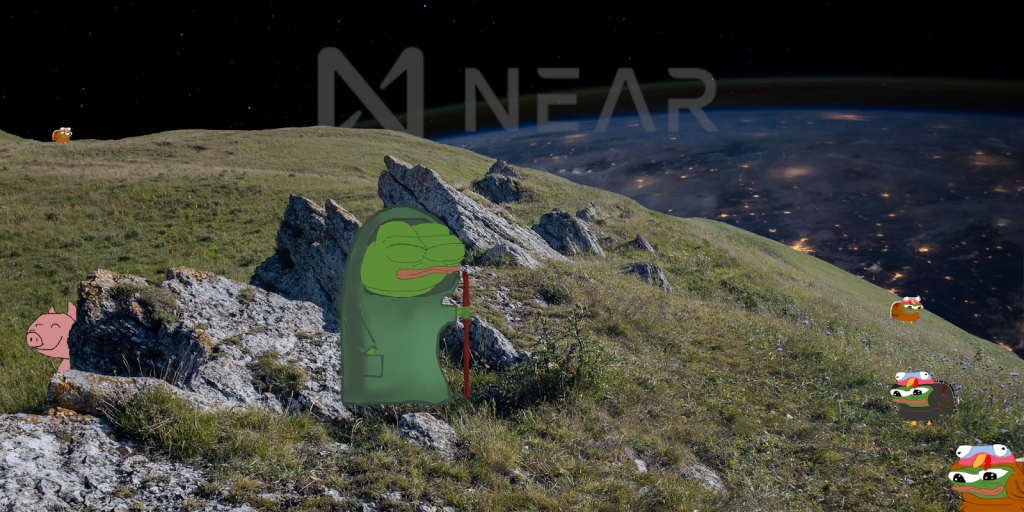
The future of DeFi is bright, and so is the future for NEAR. The project couldn’t launch its mainnet at a more perfect time – the market is booming, more and more projects are launching, venture capital is flowing, and even the institutions are going in. But what is more important – is that the NEAR’s team understands what it takes to thrive in the chaos of a nascent tech industry. And in their case, it means collaborating with Ethereum so the two networks propel each other forward rather than cannibalizing each other. And honestly, NEAR also might be a very profitable opportunity for you, regardless of your role – content creator, investor, dev. You just have to survive the entropy.
Education at NEAR: Scalable Affordable dApps for Hackers and Entrepreneurs
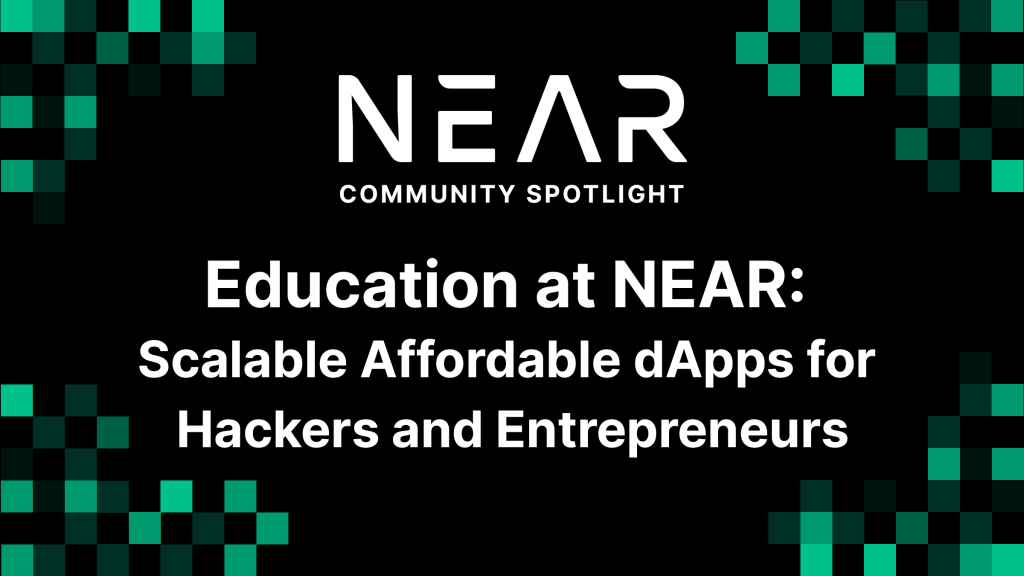
At BlockHash Live 2020, (3:17.29) NEAR Head of Education Sherif Abushadi spoke about the way the NEAR team has been building NEAR Protocol in light of the evolution of the world wide web, the future of cryptocurrency, and the nature of open-source project development. In parallel, the NEAR Education Guild led by NEAR’s James Waup, is planning to launch in the coming month by supporting research and ecosystem development on all things related to learning about and building on NEAR.
“Building a strong community is hard and takes time to get right (and a lot of luck). You basically want to attract the biggest and brightest minds but to do so you have to have a compelling narrative that gets these people excited and motivated.” – The Daily Gwei
What is the Open Web? Getting Behind The Narrative Grounding NEAR
Sherif delved into the history, present, and future of the web in his BlockHash Livestream. Covering the development of Web 0, Web 1, Web 2, and now Web 3, Sherif contextualized the development of NEAR within the revolutionary paradigm shift that distributed ledgers and digital tokens propose for creating a new internet of trustless value.
While Web2 has been characterized by ‘broadcast media’ and the capacity to share large amounts of information, images, and videos with other people, Web3 is characterized by decentralization and ownership.
In Web2 we are used to fast, cheap data. In Web3 one of the core features will be data unassailability and data permanence. This is a major shift.
– Sherif Abushadi, NEAR Head of Education
The narrative that NEAR embraces as a Layer 1 Protocol, is that it is uniquely positioned to not only scalably develop the Open Web – but to do so in a way that puts users and developers first. That vision is at the heart of what NEAR hopes to achieve: A scalable and usable Web3 platform capable of achieving mass adoption.
Developers can Expect Easy Building and Built in Optimizations on NEAR:
To date, most blockchain protocols require developers to learn a special programming language in order to create smart contracts and applications (i.e. Solidity). NEAR approaches development by making it easy for existing developers (From Web2) to easily start building in familiar languages: Contracts are written using AssemblyScript or Rust and compiled to Wasm, which is almost Javascript,
In addition, Sherif explains how optimizations on NEAR are built into the protocol, resulting in a network that is 10x-100x cheaper than ETH, where developers get 30% of the transactions that your smart contract uses, and where 1 second block time and 3 second finality make it easy to rapidly send transactions onto the network.
There Are A Lot of Opportunities To Get Started As A Developer or Entrepreneur On NEAR:
The Open Web Collective (-15 million raise for projects in 2020): Founders and teams have the opportunity to apply to the Open Web Collective as a unique crypto accelerator for their project dealing with all aspects of product design, business development, funding and team building. For more on the opportunities available click here.
NEAR Grants Program (100k NEAR Budget): For solo projects, small fixes, events, NEAR is about to start their Grant program. This opportunity is for Web3 project planners, NEAR Community Members, and Guilds to leverage the grant system to continue to build the ecosystem.
NEAR Bounty Program (50k NEAR Budget): At Near.org/bounties community members and public hackers have the opportunity to help build certain aspects of the NEAR ecosystem for a set reward. Bounties can be set by team members or Guilds.
Figment Learn Pathway for NEAR: NEAR recently partnered with Figment Learn to provide a pathway for developers to start building dApps on NEAR. Completing the pathway will earn prospective developers 10 NEAR and also provide them with a basic overview of development on NEAR!
Gitcoin Kernel (8 Week Fellowship): Last but not least, through Gitcoin Kernel, developers have the opportunity to apply for an eight week fellowship to fully develop a specific project within the NEAR Ecosystem – this could relate to the EVM, Rainbow bridge, or any project or protocol building on top of NEAR!
The NEAR Education Guild is Here!
The recently launched NEAR Education Guild is a collaborative place to discuss the growth of the NEAR community, set and earn bounties on communicating NEAR, and working with other interested community members interested in understanding all of the facets of NEAR protocol. As NEAR is a young protocol, and the education guild is even younger there is a world of opportunity for interested crypto enthusiasts, Web2 developers and genuine intellectuals interested in the new frontier of opportunity provided by the Open Web! To join the conversation, click here.
A Home For NFT’s Is Building on NEAR: Here Is Why That Matters
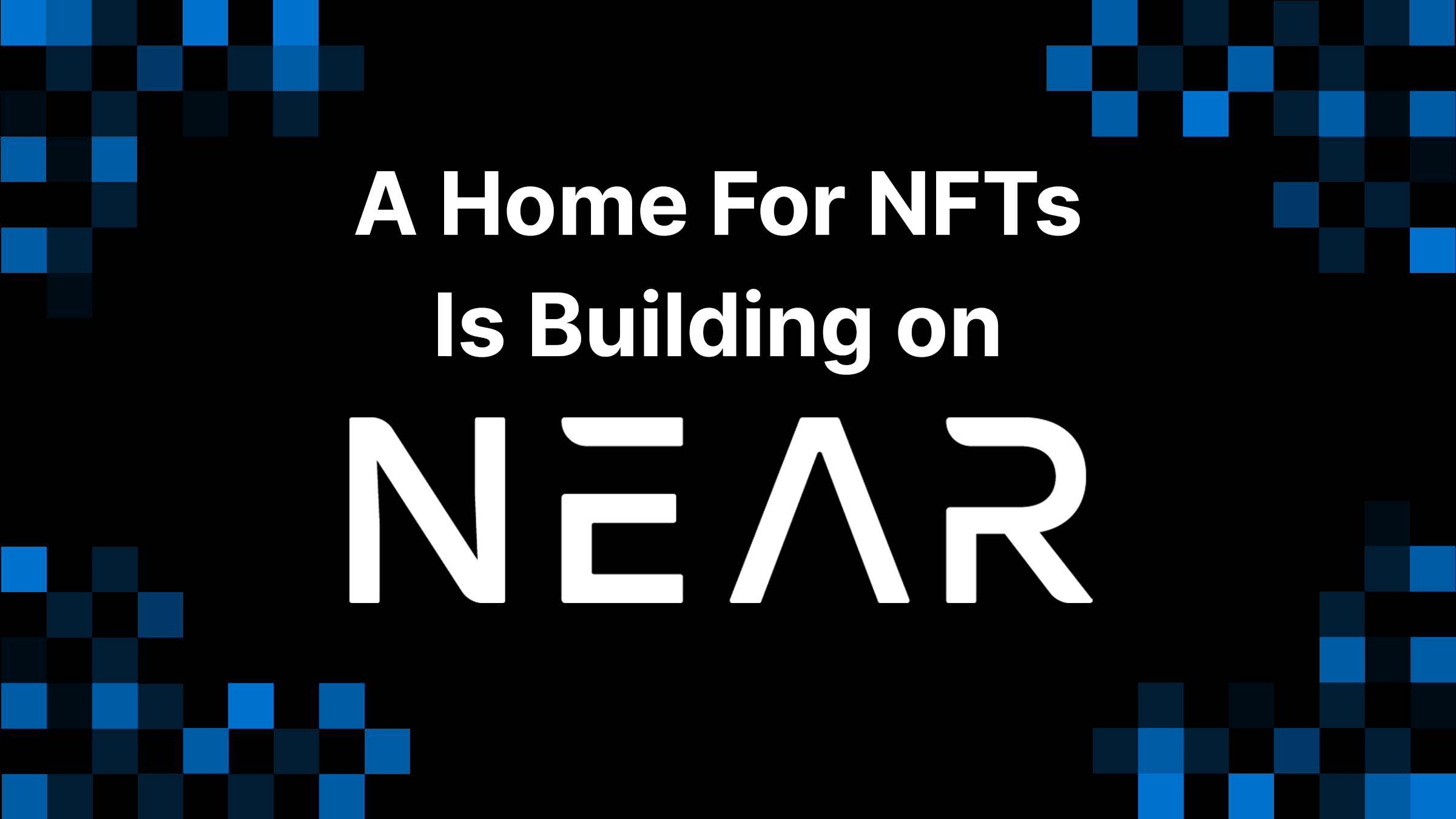
Most people have heard of Non-Fungible Tokens: Crypto-Kitties. A New Ownership Economy. Tokenized Art. Real Estate. There are plenty of different buzz words used in reference to the massive potential that this rising asset class holds whether it be for providing new value, business models, or personal credit to creators and investors alike.
In context, Non-Fungible Tokens have somewhat silently emerged in the past 6 months beneath the DeFi frenzy, with nonfungible.com registering over $8.6 million dollars in value exchanged in the past month alone – 5.9% of the total value that NFT’s have garnered since they were created.
Define Non-Fungible Token According to the NFT Bible:
Non-fungible tokens (NFTs) are unique, digital items with blockchain-managed ownership. Examples include collectibles, game items, digital art, event tickets, domain names, and even ownership records for physical assets.
If you are not familiar with NFT’s you may have a hard time conceptualizing their value or how they can be used. Here is a general point to keep in mind:
With NFT’s, you have the opportunity to establish unique digital ownership over a specific asset, in which you alone possess that asset, and the details (or metadata) pertaining to that asset are built into the smart contract beneath it. That means that the asset can be divided and sold, value can be pushed into the asset from another contract, and changes in ownership over time are recorded in its digital mechanics.
Where is Disruption from NFT’s Going To Happen (First)?
Art, Music, and Content: According to Matty (@DCLblogger) NFT’s have the potential to bring the following to creators and artists alike: They Can be tied back to the Artist, Sales history tracked, Bought & Sold on the Marketplace, Authenticated as the ‘original’ piece. Royalties can also be built into the transfer of ownership of the piece of art, music, or content in question.

Real Estate and Land: Tokenizing houses, pieces of land, or geographical coordinates has the added benefit of better managing ownership, distributing / fractionalizing value, and increasing exposure to different markets. From being a smart real estate investor to plotting out land tenure claims in the developing world, NFT’s bring a host of value to multiple industries dealing with both physical and digital land.
Tickets and Events: Ticketing and event management is an interesting one, that assumes the future of tickets, event management and voting is going digital. In a post-covid world that idea does not seem to be too far fetched. Here is what Mintbase’ Nate Geier had to say about NFT’s for ticket management:
“NFT’s are really going to start shining when using voting and tickets with NFTs. You can buy the ticket using a decentralized currency and go to an event. But as soon as you say there is an open API anyone can interact with to create voting apps or ecosystems, then you can add things by saying, anyone who has a DAppcon ticket can cowork at our space as well – this is really exciting.” – Hack the Rainbow Session 5.
In essence, using NFT’s for ticketing, voting and events allows project managers and event hosts to digitally push value and additional perks into their audience’s pockets for services that may relate to an event (i.e. free access or claim) or even go beyond it (i.e. anyone who attended Web Summit gets a free coffee certificate to Starbucks every month for the next 12 months through their NFT).
Gaming: Online Gaming, predicted by some to be the home of the next trillion dollar company is another key area where NFT’s are shining. In games like Zed.run users are able to purchase scarce digital assets that have the opportunity to improve their performance or add uniqueness to their character. From horses, to weapons, to rare items, game creators can embed such objects into their gaming worlds and let them take on a life of their own on alternative markets, and among players and collectors.
Financial Instruments: Last but not least, NFT’s have the potential to revolutionize financial instruments – especially in how value can be stored, fractionalized, and traded. An easy example of this would be to use an NFT of an asset (i.e. a digital piece of art or a bottle of wine or a house) as collateral for backing a loan. The NFT is locked in return for accessing the loan. Only once the loan has been repaid, is the NFT transferred back to its owner. These functions are programmed into the smart contracts underlying the tokenized assets.
Ready for something really mind boggling? You could tie a stake on a protocol into an NFT, and then fractionalize that NFT and sell pieces of it to different users interested in accruing state interest over time. This is how it is explained in the NEAR – ETH Rainbow Hackathon:
“Mark just minted an NFT that allows you to accrue your states interest, if you are the owner of that NFT. So if you want to give that NFT to your friend for christmas, then they can start accruing the interest. The owner of the NFT is the staker – the Aave staker. The NFT offers portable stake pieces that can be shared or loaned out. DeFi NFT stuff is the next frontier.” – Hack the Rainbow Session 5
Why is NEAR the Home for NFT’s?
A lot of people underestimate the importance of accessibility and usability in the context of new technology or innovative products. Put simply, if it’s not easy for average people or niche market segments to access and use a product in question, it probably will not go mainstream anytime soon. This sentiment is echoed by dApp Radar’s Ilya Abugov when he tells Cointelegraph about the following challenges NFT’s are facing:
“Although there is a bit more engagement, there is not much ready for mainstream use in terms of UX/UI. Moreover, NFTs inherit all of the typical difficulties of a blockchain-utilizing project and some of the traditional industry challenges may cross over as well. For example, art and collectibles are not very liquid.” (CoinDesk)
NEAR is well positioned to become the home for NFT’s because NEAR provides a platform that is exceptionally user and developer friendly: Use an Account Name, Build solutions in Rust or AssemblyScript, No Network Congestion Worries, and most importantly, Community Infrastructure to support creators and projects. What this means, is that NEAR is at the forefront of making NFT’s digestible to average users, investors or collectors – without having to worry about technical terminology, alphanumeric wallet addresses, and high transaction fees. For a more comprehensive overview of NEAR Protocol and its many features, see The NEAR Investment Thesis.
NFT’s On NEAR: What’s Happening Right Now
As a protocol, NEAR recently launched their main network back in September. In the short couple of months since that time a number of different projects focused on supporting the growth and development of Non-Fungible Tokens has organically arison on the platform. At the time of writing (December, 2020) a foundation is being built for a robust NFT community on NEAR. Here are the main players involved in that community:
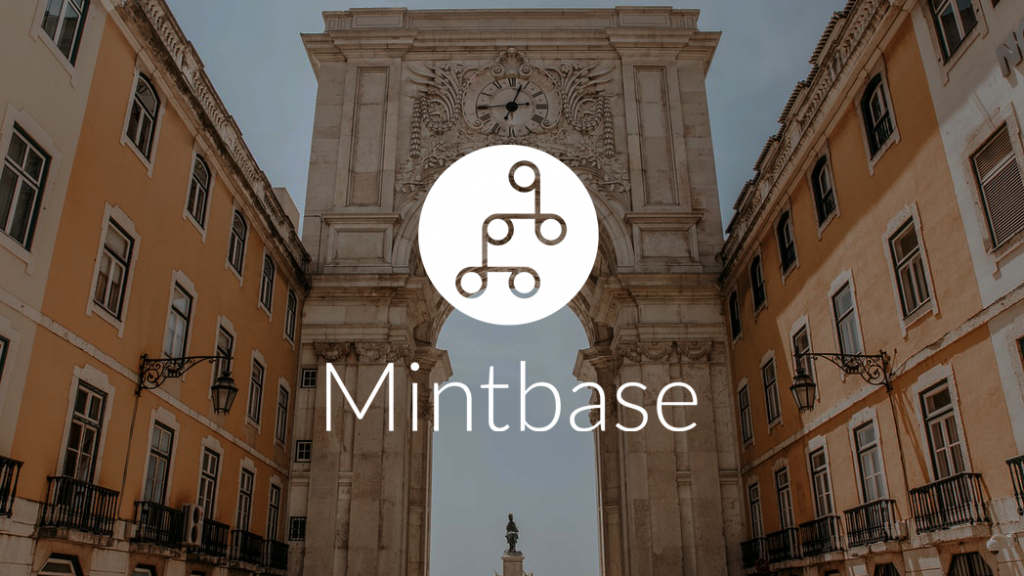
Mintbase: Mintbase is in many ways the Mothership of NFT’s on NEAR. It’s a base-level platform that allows anyone and everyone to easily mint their own NFT’s and collections for whatever purpose they have in mind. Original planned for Ethereum, but now building fast out of Portugal, Mintbase boasts over 980 existing stores and more than 81,000 transactions. A transcript and general overview of Nate Geier’s Session at the Hack the Rainbow Hackathon can be found here.
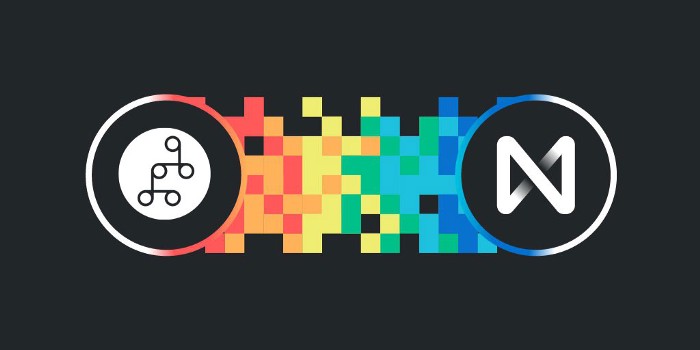
Createbase Guild: CreateBase is one of the fastest growing Guilds on NEAR. Managed by a community of artists and creators actively building on the platform, Createbase holds weekly calls to discuss project opportunities, funding rounds, and new ideas relating to the development of products and materials that will help promote NFT’s, Art, and other unique assets. To see the project pipeline click here.
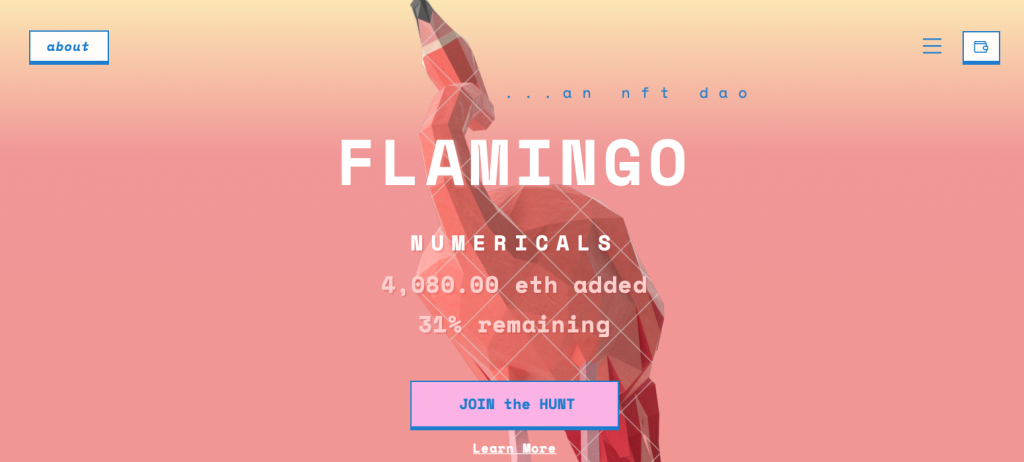
FlamingoDAO: FlamingoDAO is in its early days but from what is known about, is that it will exclusively support the development of NFT’s with funding, NFT acquisitions, and guidance for founders and developers. A full overview of FlamingoDAO can be found here. A fill overview of NEAR’s engagement with FlamingoDAO can be found here.
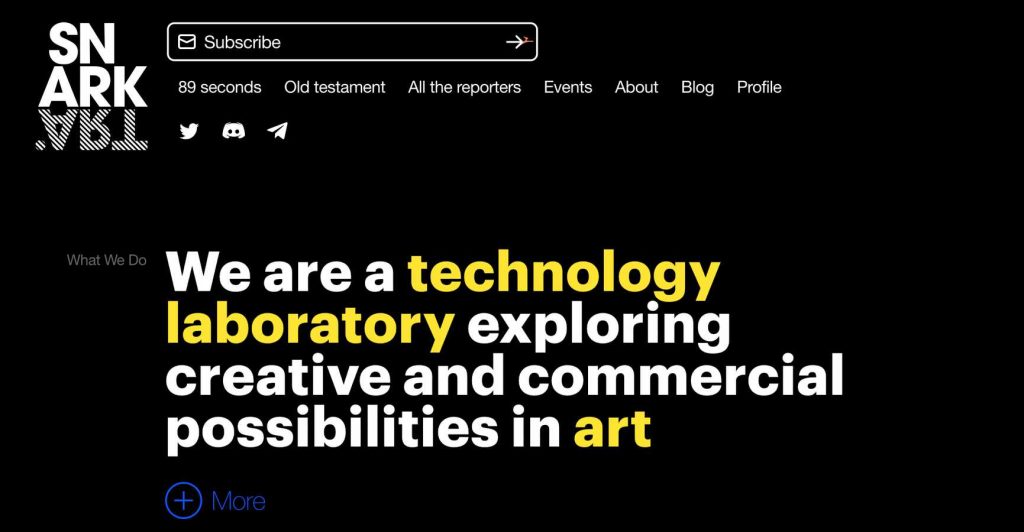
Snark.Art: Snark.Art describes itself as a technology laboratory at the intersection of crypto and art, exploring the commercial value proposition behind tokenized art. To date, users are able to purchase digital and physical art on the platform, while also connecting with artists.

ARterra: ARTerra describes itself as a home for digital collectables, at the intersection of gaming, fan engagement and events. NFT’s are used as a unique bridge in value between teams and fans, to increase overall engagement in sports and provide new value diffusion mechanisms to loyal followers.
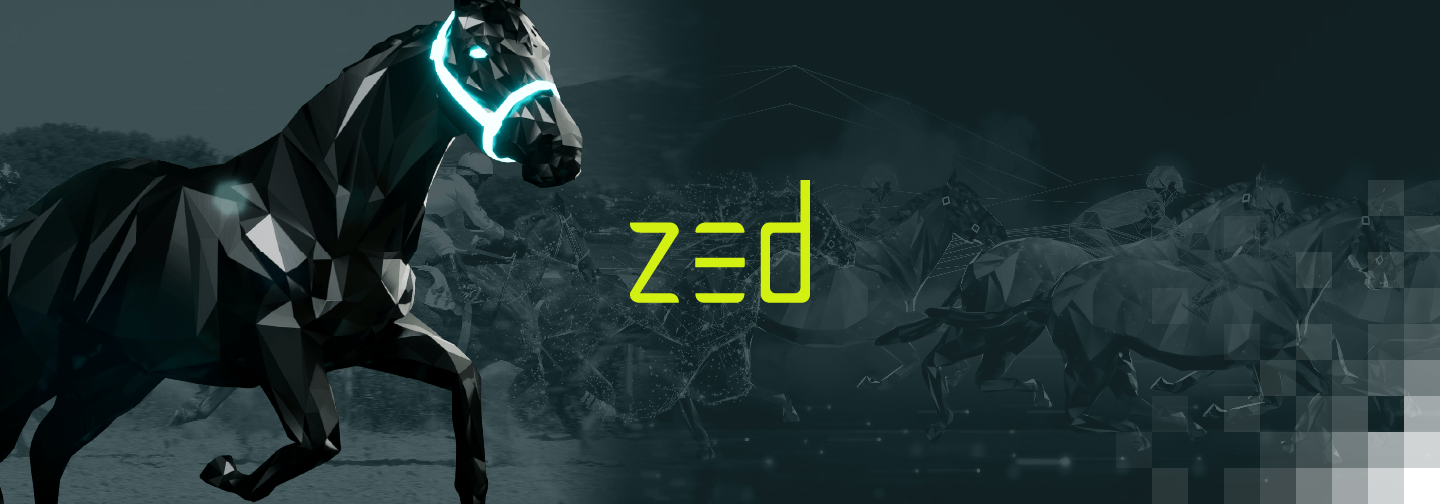
ZED / ZEST: When Digital Race horses meet NFT’s. Users are able to own, breed, and race their digital race horses. Customizations and staking coming soon. While the original platform is built on Ethereum, the Zed team has shown a deep interest in building out more on NEAR as their ecosystem continues to develop in both sophistication and adoption. For more on Zest check out NEAR Without the Noise Episode 5.
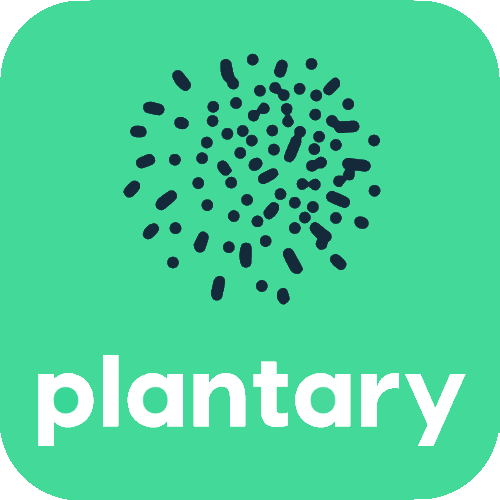
Plantary: A hackathon project developed by Mykle and Lenara working at the intersection of Art and NFT’s. For more about Plantary check out the writeup on their NEAR Without the Noise Episode.
What these many projects indicate – to future artists, musicians, developers, and entrepreneurs, is that the NEAR Ecosystem is an emerging home for NFT’s. With a robust community that is both funded and active in sharing ideas, and projects, NEAR is building out the groundwork for creators, artists, and entrepreneurs alike to take NFT’s to the masses in the coming years. This comes at a time when NFT’s are poised to break through as one of the most exciting and valued asset classes in crypto.
To join the Createbase chat click here.
NEAR Without the Noise Episode 5: Zed.Run with Travis Winn and Rob Salha
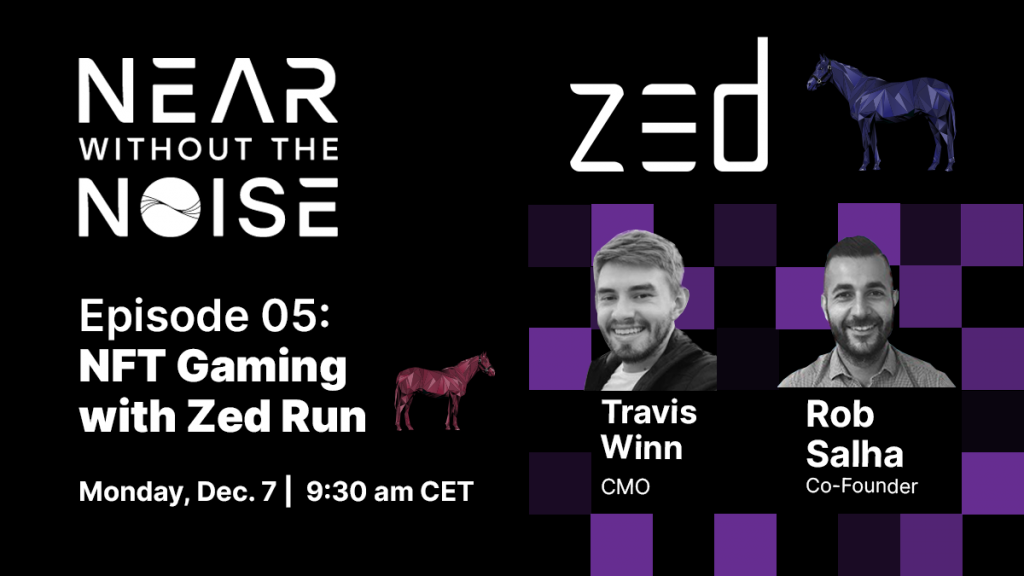
4NTS Guild recently featured Travis and Rob from Zed.run on NEAR Without the Noise Episode 5. As an episode that featured an inside look at Zed.run, one of the most impressive crypto-based horse racing platforms in existence, NEAR community members and general crypto enthusiasts will gain much from listening to Travis and Rob as they discuss their solution, the future of gaming and crypto, NFT’s and why they chose to build on NEAR Protocol.
A full link to the episode can be found here.
Zed.Run Is THE Place to Race User Owned and Bred Digital Race Horses
The episode started with Rob walking through the actual product that Zed.run has built: An online ecosystem of user owned and bred race horses, designed to reflect horse racing 200 years into the future, and largely inspired by the movie tron. Users have the opportunity to purchase thoroughbred racehorses, and then breed additional horses that can then be traded, raced, and (in the future) customized according to the user’s interests.
“Horse racing is one of the oldest sports to exist, and one of the few remaining unchanging if you think about it. We did want to change that, and we wanted to bring a community driven ecosystem to a younger audience and introduce them to the world of horse racing and what it actually meant as well. That was a big motivator to us as well.” — Rob Salha
Beyond simply purchasing any horse, horses are tokenized as Non-Fungible Tokens (NFT’s) that also contain complex features: Bloodlines, Genotypes, and Breed Types. Zed.run is thus an ecosystem for users to strategically breed, manage, and race horses for REAL MONEY staked as ZEST tokens or other currencies. In simple terms: Welcome to the Digital Era of Horseracing.
Zed Run Started in 2018, and is Heavily Crypto Inspired:
In early 2018 the Zed team decided to go all in on NFT’s and gaming, largely inspired by the fascinating inroads that crypto kitties were able to achieve (at great cost to the Ethereum network). Rob and Travis both found the crypto community to be interested and welcoming to the idea of Digital Horse Racing. On the unique nature of building a crypto project, Travis had the following to say:
“It’s the most intelligent community space in the world. In a lot of other industries everyone is kind of normal, and then you get into crypto and blockchain and it seems like everyone has a PhD and you kind of just walk through nodding your head saying ‘yeah’, ‘yeah’ that’s cool, that’s awesome. But it is probably the most accepting community as well. Everyone just loves learning with you as well.
Travis Winn
This attitude corresponds to the strong focus that the Zed team placed on their community: Where an active discord, and over 150 daily races, has led to widespread ecosystem engagement across demographics and global locations.
“Most definitely the crypto community always has someone there willing to lend you their knowledge and walk you through something, explain something to you. It is one of the most welcome communities out there, and not just from a user level, like we see a lot of new users coming into our discord and our community, and we’ve got a whole bunch of users helping that user buy their first horse or install metamask.” — Rob Salha
Zed Has Big Plans for the Future Relating to Customization, Tokenization, and Governance!
To date Zed Run offers users the capacity to purchase, breed, and race digital horses. The stats are impressive: Over 150 races a day, and between 3 to 4 thousand races per month with hundreds of thousands of dollars bet on race outcomes. In the future, Zed plans to incorporate its own unique token DEZ into the ecosystem. Players will also be able to design and host their own races, while users can customize the saddles and other features of their horses. The full scope of ZED’s ambitious and community-focused planning can be found in the Zed Vision Paper.
For us the most important thing was to build an awesome product first and foremost – to make sure that racing was fun, and that racing was accessible, and to make sure that breeding worked as well. For us, we went more to the entertainment side of things. We felt like that if we did focus more on wagering and gambling its a very big black hole of jurisdictions, legal and all of these sorts of stuff. As a passionate startup focused on building games and building communities, we wanted to make sure that we were focused first and foremost on the product and at the same time on the community as well. – Rob Salha
NFT’s Are In Their Early Days:
As a project focused on building an ecosystem surrounding unique, non-fungible digital racehorses, Zed.Run is at the forefront of the impending wave of NFT solutions entering the crypto space. Rob had a number of important insights on the future of NFT’s in crypto, most aptly summarized in the following manner:
NFT’s are only a couple of years old. We see NFT’s as a way to game in the future as well. There is nothing cooler than pouring time and energy and love into a game you are playing and then being able to take things that you earn from an ecosystem or from a game and go on and monetize it through secondary markets or interoperability as well. I don’t think the mainstream has grasped that quite yet. — Rob Salha
And just like other technologies, the team at Zed.run strongly believe that the future is on their side in terms of adoption: As more people become familiar with Web3 and more people start to understand the underlying values of ownership and distributed value embedded into NFT’s, access and engagement will undoubtedly follow:
We haven’t even scratched the surface of what NFT’s is. Over time, the barriers will be brought down the onramps will be a lot easier and the bottlenecks will start to be removed.
ZED and NEAR Have A Very Close Relationship:
The Zed staking and betting platform Zest is built on NEAR Protocol. Zed originally got into touch with NEAR just over a year ago, and has a fantastic relationship with them to date. According to Rob, common visions of the future, a strong focus on communities, and a win-win mentality in crypto truly ground the two projects.
“When we met the guys at NEAR we just hit it off. It was a match made in heaven, love at first sight, whatever you want to call it. But they were absolutely so passionate about helping creators create without the shackles so to speak. We love the way that NEAR Approached us. They just wanted to get to know us, and to get to know why we were building what we were building. And to us that was really important.” – Rob Salha
As Zed continues to build out its ecosystem as defined in its vision paper, NEAR Protocol will undoubtedly play an important role in supporting the DEZ and ZEST infrastructure among other things.
“NEAR is willing to work with other businesses, other companies, and other blockchains, to make sure that we get adoption as an entire industry, as an entire community as well. We do see NEAR playing a really massively important role into the ZED Run Ecosystem as well.”
– Rob Salha
To get started with Zed check out Zed.run!
Alexandra Tinsman On NEAR, Crypto, and The Future of DeFi
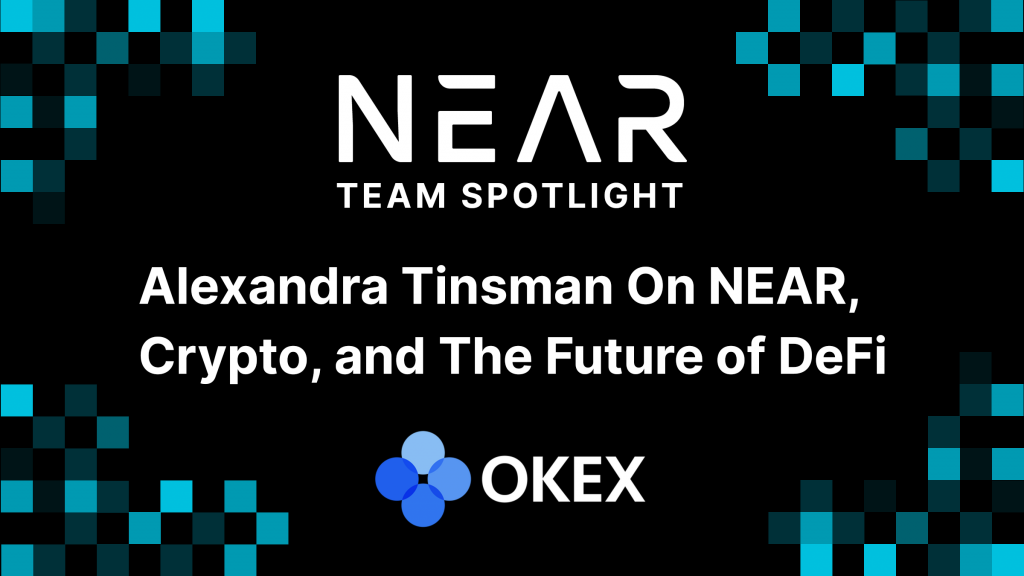
NEAR recent hire Alexandra Tinsman (Vice President of Marketing) did a live stream with OKex on the topic of DeFi and the future evolution of crypto in context. As one of the first public appearances for Alexandra, there were a number of different insights put forward:
Note a full link to the discussion can be found here.
DeFi is In Its Experimental Stages: There Is a Lot of Work To Be Done
“There are these companies that want to establish their reputation right away. And they are trying so hard to get fame and mind share, and really I think about a lot of the protocols and the fact that they are giving away tokens. You see that a lot in DeFi. It’s not sustainable: It is just not sustainable. So I think the next up with crypto-economics and DeFi and taking a closer look at the protocols is really the question we should be asking is how are these companies that are giving away all of these tokens going to switch to something more sustainable in the future. Is this system still going to function if they do not find a way to stabilize inflation? I personally think we are seeing developers don’t know the answer to that. I think that is a problem and they are hoping to figure it out.”
As the quote from Alexandra explains, crypto-economics more generally and DeFi specifically, are in their early, early days, with large amounts of experimentation still taking place. Developers and founders are still ironing out problems that their platforms run into, while more sustainable and long-term thinking still needs to catch up.
“I like to remind people entering the space, and myself included, that this is still in the experimental stage – it is so easy to get sweeped away with the idea of a product, but you have to look under the hood. I think we have a long way to go until we can see really good evidence of what is going to make it to mainstream.”
Education and Governance Are Crucial Pain Points of DeFi
The discussion moved on to emphasize how DeFi is both new but also immensely complex. With the host even commenting that DeFi is starting to resemble more and more the complex financial products we see in the mainstream. As such the largest barriers to overcome for more general crypto-adoption (even before going mainstream) center upon education and governance. Here is what Alexandra had to say on that topic:
DeFi governance is super underdeveloped. I think that projects in the DeFi space are releasing these governance tokens without enough structure or even how and when they are going to get used.
In general, she emphasized that governance, regulation, and the future development of a platform are all strongly interlinked. New projects entering the space must then craft a delicate balance between incentives and sustainable development that is not always easy to manage.
“You have to have great economics, but also assurance that governance is going to protect those economies. And if they start to do better, then the chances are that DeFi is going to take over the crypto world and traditional finance probably.“
The Next Wave of Crypto Innovation Is Here:
While on the topic of DeFi, different crypto-economic protocols and the future of blockchain, the discussants also touched upon the growing amount of real-world adoption taking place with digital currencies. This was discussed in detail with reference to Central Bank Digital Currencies (CBDC’s) and especially the Digital Yuan pioneered by China:
“This is going to change world wide commerce and is likely going to shift digital dollars and digital yuan within a decade. Even today I was reading on Coindesk that the Chinese Central Bank just shared over 4 million transactions totaling more than 2 billion Yuan have been conducted using the digital Yuan. My jaw drops because China is already doing it. They are testing it out and rolling it out. It’s happening. So that evolution of economies is pretty exciting.”
The main takeaway is that, Crypto is on a pivotal tipping point on the edge of mainstream adoption. In the future these protocols will not only be home for crypto-entrepreneurs and experimental communities, but also companies, institutions, governments and associations, as well as average consumers.
The NEAR Team Is Really Trying to Build the Open Web
In what should be a strong confirmation for NEAR community members and those who are aligned with the larger vision of NEAR, Alexandra emphasized how the NEAR really got her onboard because of their vision, and the values they hold while looking to execute such a vision.
“The whole idea being a very developer friendly, proof of stake public blockchain is something that really resonated with me. I think the biggest thing that I saw with the NEAR Team – super smart and savvy. Amazing background. But really they are able to open up blockchain app development for developers who are not specialists. And for me, there was a lot of potential there. I began checking their community and looking more….I think the possibility of going deeper in the ecosystem and the industry is what I am attracted to and the interoperability is the aspect that to be me is always going to be appealing.“
The focus point here is that NEAR’s emphasis on usability and being developer friendly is attracting support from crypto-veterans. As crypto becomes more understood, bridging the gap between Web2 and Web3 remains an important task that so far NEAR seems to be exclusively attacked on all fronts!
